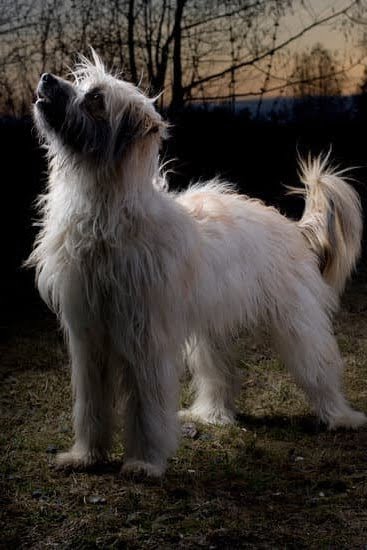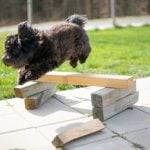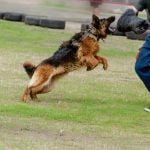Sled dogs are iconic athletes known for their strength, endurance, and teamwork. But what do sled dogs do to train and prepare for the grueling challenges of long-distance racing?
In this article, we will delve into the world of sled dog training to understand the methods and techniques used to transform these canines into elite athletes. From physical conditioning to mental stimulation, teamwork, and nutrition, sled dogs undergo rigorous training to prepare for the demands of pulling a sled across vast distances in harsh conditions.
The history of sled dog training is rich and diverse, with traditional methods shaped by generations of indigenous peoples and explorers who relied on these incredible animals for transportation in remote regions. Today, modern sled dog trainers draw from this legacy while incorporating contemporary knowledge of animal behavior, physiology, and nutrition to optimize performance.
In this comprehensive exploration, we will uncover how sled dogs build endurance and strength through physical conditioning, the role of mental stimulation in fostering focus and determination, how they learn to work together in harness as a team, and the vital role of nutrition in fueling their peak performance. Understanding the dedication and training required to transform sled dogs into elite athletes is essential for appreciating their remarkable abilities on the trail.
History of Sled Dog Training
Many traditional methods and techniques have been used in sled dog training throughout history, and these practices continue to shape the way sled dogs are prepared for the challenges they face on the trail. The history of sled dog training dates back centuries, with indigenous Arctic people harnessing the strength and endurance of these dogs for transportation, hunting, and communication.
One traditional method that has stood the test of time is “mushing,” which involves using commands and signals from the musher to guide and direct the sled dogs. This technique requires a deep understanding of canine behavior and communication, as well as a strong bond between the musher and the team of dogs. In addition to mushing, other traditional methods include using positive reinforcement, pack mentality, and natural instincts to train sled dogs.
These historical training methods have informed modern sled dog training practices, with an emphasis on building a strong bond between human and canine athletes, understanding pack dynamics, and respecting the natural abilities of these working animals. Today, sled dog trainers combine traditional techniques with modern knowledge of animal behavior, physiology, and nutrition to develop comprehensive training programs that prepare sled dogs for elite athletic performance.
| Traditional Methods | Modern Techniques |
|---|---|
| Mushing | Positive reinforcement |
| Pack mentality | Behavioral psychology |
| Natural instincts | Nutritional science |
Physical Conditioning
Sled dogs are renowned for their ability to endure long runs through harsh and challenging terrains, making physical conditioning a crucial aspect of their training. Here are some of the key ways sled dogs build endurance and strength for their demanding role:
- Running: Sled dogs undergo extensive running training to build up their endurance and stamina. This can include both shorter, intensive runs as well as longer distance runs to gradually increase their endurance levels.
- Weight Pulling: Another method used to build strength in sled dogs is weight pulling. Dogs are harnessed to a weighted sled or drag object, which they pull across various distances. This helps to develop their muscles and build overall strength.
- Cross-Training: To prevent injury and keep the dogs engaged, sled dog teams often incorporate cross-training activities such as swimming or agility exercises. These activities help improve overall fitness while reducing the risk of overuse injuries.
In addition to these physical training methods, sled dogs require proper nutrition and hydration to support their physical conditioning efforts. A diet high in protein and fat is essential for maintaining energy levels during long runs, while adequate hydration is crucial for preventing dehydration and maintaining performance.
Overall, physical conditioning plays a significant role in preparing sled dogs for the rigors of long-distance mushing. Through a combination of running, weight pulling, cross-training, and proper nutrition, sled dogs are able to develop the endurance and strength needed to excel in their demanding roles on the trails.
Mental Training
Sled dogs are known for their incredible endurance and strength, but perhaps what is not as well-known is the mental training that goes into preparing these dogs for long runs. Mental training is a crucial aspect of sled dog performance and involves various techniques to stimulate their minds and help them stay focused during races.
One of the key mental training techniques for sled dogs is environmental exposure. This involves exposing the dogs to different sights, sounds, and smells to prepare them for the unpredictable nature of the trail. By familiarizing them with various stimuli, sled dogs can remain calm and focused in any situation they encounter during a race.
In addition to environmental exposure, mental training for sled dogs also involves activities that challenge their cognitive abilities. This can include puzzle toys, obedience training exercises, and interactive games that require problem-solving skills. These activities not only keep the dogs mentally sharp but also provide an outlet for their energy, reducing restlessness and anxiety before a race.
Another important aspect of mental training for sled dogs is positive reinforcement. Using rewards such as treats or praise, handlers can reinforce desired behaviors in the dogs, encouraging focus and attentiveness. This creates a strong bond between the musher (dog sled driver) and the team of dogs, leading to better communication and teamwork on the trail.
| Mental Training Techniques | Benefits |
|---|---|
| Environmental Exposure | Prepares dogs for unpredictable trail conditions |
| Cognitive Challenges | Keeps dogs mentally sharp and reduces restlessness |
| Positive Reinforcement | Strengthens bond between musher and team of dogs |
Teamwork and Communication
Sled dogs are known for their incredible teamwork and ability to work together in harness to pull sleds across long distances. But how exactly do these dogs learn to cooperate and communicate effectively with each other? The training process for teamwork and communication is crucial in developing a successful sled dog team.
One method used to train sled dogs for teamwork is through socialization and group exercises. This involves allowing sled dogs to spend time together, fostering a bond and camaraderie amongst the team members. Through group activities such as running together, playing, and eating in close proximity, sled dogs learn to trust and rely on one another, essential qualities for effective teamwork.
In addition to socialization, trainers also utilize specific commands and signals to facilitate communication among sled dogs. Commands such as “gee” for right turns, “haw” for left turns, and “easy” for slowing down are taught to the dogs through consistent training and reinforcement. These commands help the team of sled dogs navigate the trail smoothly and efficiently, ensuring that they can work harmoniously together during a race or expedition.
Overall, the development of teamwork and communication skills in sled dogs requires patience, consistency, and an understanding of canine behavior. By establishing strong bonds among team members and teaching them essential commands, trainers are able to create cohesive units that can tackle the challenges of sledding expeditions effectively.
- Socialization through group activities
- Teaching specific commands for communication
- Establishing trust among team members through shared experiences
Nutrition and Diet
Sled dogs are elite athletes that require specialized nutrition and diet to perform at their best. Proper fueling is essential for sled dogs to build endurance, strength, and maintain overall health during long runs in cold and harsh conditions.
Balanced Diet
A balanced diet is crucial for sled dogs. They require a combination of proteins, carbohydrates, fats, vitamins, and minerals to meet their energy needs. Sled dogs typically need high-quality meat-based protein to support their muscle development and stamina. Carbohydrates are also important for providing quick energy during runs, while healthy fats help with insulation and provide a long-lasting source of energy.
Hydration
Proper hydration is essential for sled dogs as they exert a significant amount of energy during long runs. Lack of hydration can lead to fatigue, muscle cramps, and decreased performance. Sled dog trainers ensure that their dogs have constant access to clean water before, during, and after training or races.
Supplements
In addition to a well-balanced diet, sled dogs may also benefit from supplements such as fish oil for omega-3 fatty acids, glucosamine for joint health, and electrolyte powders to replace lost nutrients during intense exercise. Supplements are carefully chosen by veterinarians and nutritionists to fill any nutritional gaps in the sled dogs’ diet.
Overall, proper nutrition plays a crucial role in fueling sled dogs for peak performance. Trainers closely monitor the dietary needs of these remarkable animals to ensure that they are receiving the necessary nutrients to excel in their demanding sport.
Obedience and Commands
When it comes to training sled dogs to follow instructions on the trail, obedience and commands play a crucial role in ensuring a successful run. Sled dogs must learn to respond to verbal cues and signals from their musher in order to navigate the trail effectively, avoid obstacles, and maintain a steady pace. This section will delve into the specific methods and techniques used to train sled dogs in obedience and commands.
Verbal Commands and Signals
Sled dogs are trained to recognize and respond to a variety of verbal commands and signals from their musher. These can include basic instructions such as “left,” “right,” “stop,” and “go,” as well as more specific cues for navigating obstacles or adjusting speed. The training process involves consistent repetition of these commands during practice runs, reinforcing the association between the verbal cue and the desired action.
Positive Reinforcement
In addition to verbal commands, sled dogs are also trained using positive reinforcement techniques. This may involve rewarding the dogs with treats or praise when they successfully execute a command, reinforcing the behavior and encouraging them to continue obeying instructions on the trail. Positive reinforcement helps create a strong bond between musher and dogs, fostering trust and cooperation within the team.
Consistent Training Regimen
Consistency is key when it comes to training sled dogs in obedience and commands. Regular practice sessions are essential for reinforcing learned behaviors and introducing new cues. By maintaining a structured training regimen, mushers can ensure that their sled dogs are well-prepared to follow instructions on the trail, ultimately contributing to a successful and efficient run.
As we explore how sled dogs are trained in obedience and commands, it becomes clear that patience, consistency, and positive reinforcement are foundational elements of this process. By establishing clear communication between musher and team, sled dogs can perform at their best, demonstrating their unparalleled athleticism and dedication on the trail.
Rest and Recovery
Sled dog trainers prioritize providing their canine athletes with comfortable and warm resting areas, where they can relax and rejuvenate their bodies. In addition to physical rest, mental relaxation is also important for sled dogs. Engaging in activities that reduce stress, such as massage or quiet time alone, can help sled dogs recharge both physically and mentally after rigorous training sessions or races.
It is also crucial for sled dogs to have a balanced diet during their recovery period. This ensures that they receive the necessary nutrients to support muscle repair and overall health. Furthermore, hydration is key for sled dog recovery as it aids in the replenishment of lost fluids after strenuous activities.
Overall, proper rest and recovery are essential components of sled dog training that contribute to their longevity as well as their ability to perform at their best during competitions or long-distance races. Without adequate rest, sled dogs may experience burnout, fatigue, or decreased performance on the trail. Therefore, trainers place significant emphasis on implementing effective rest and recovery strategies into their overall training programs for these remarkable canine athletes.
Conclusion
In conclusion, the transformation of sled dogs into elite athletes requires a tremendous amount of dedication and training. From the historical methods of traditional training to the modern techniques used for physical conditioning, mental stimulation, teamwork, and obedience, sled dog training is a complex and comprehensive process. The combination of proper nutrition and diet, along with adequate rest and recovery, is essential in preparing these incredible animals for the grueling demands of long-distance sledding.
One of the most intriguing aspects of sled dog training is the emphasis on teamwork and communication. Sled dogs must learn to work together in harness as a cohesive unit, understanding their roles and responsibilities within the team. This aspect sets them apart from other types of canine athletes and emphasizes their unique abilities to function as a group.
With all these factors combined, it becomes clear that sled dog training is not just about physical endurance; it also focuses on mental agility and discipline. Indeed, what do sled dogs do to train goes beyond just running long distances – it involves a comprehensive approach that considers every aspect of their well-being in order to transform them into elite athletes capable of facing the challenges of competitive mushing.
Frequently Asked Questions
How Do Sled Dogs Train in Summer?
Sled dogs train in summer by staying active and maintaining their fitness. Their training may include activities like swimming, running, or pulling a wheeled cart to simulate the sled pulling motion. This helps them stay in shape for when the snow comes.
Do Sled Dogs Enjoy What They Do?
Sled dogs are bred for their work and they generally enjoy what they do. They have a strong instinct to pull and run, and it gives them purpose and fulfillment. When properly cared for, with plenty of exercise and companionship, sled dogs can lead happy lives.
What Do Sled Dogs Help With?
Sled dogs help with transportation in remote or snowy areas where other methods may not be feasible. They aid in travel across icy terrain, delivering supplies to isolated communities, assisting with search and rescue operations, and even participating in recreational activities such as dog sledding tours.

Welcome to the blog! I am a professional dog trainer and have been working with dogs for many years. In this blog, I will be discussing various topics related to dog training, including tips, tricks, and advice. I hope you find this information helpful and informative. Thanks for reading!





